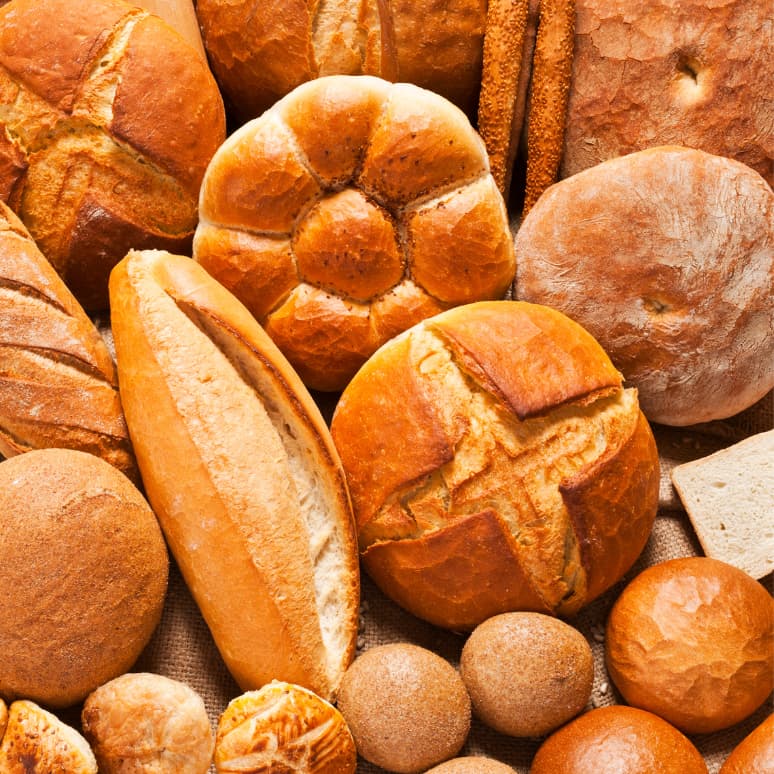Have you ever found yourself in the midst of a recipe, only to realize you’re unsure if there are enough slices left in your loaf of bread?
Factors That Affect Slice Count
Homemade vs. Store-Bought Bread
When it comes to slice count, the distinction between homemade and store-bought bread is significant. Store-bought loaves are typically pre-sliced, offering around 20 to 24 slices. This standardized approach simplifies portioning and eliminates the need for slicing at home. However, homemade bread presents a different scenario. As a home baker, you have full control over slice thickness, allowing for customization according to your preferences and recipe requirements. Whether you prefer thinner slices for delicate sandwiches or thicker cuts for hearty toast, homemade bread offers versatility in slice count.
Bread Brand
The brand of bread you choose can also influence the slice count. Pre-sliced brands like Wonder or Great Value often provide a standard count of around 20 slices per loaf. Conversely, artisanal or specialty bread brands may offer fewer but thicker slices. Exploring different bread brands introduces you to a diverse range of textures, flavors, and slice counts, catering to your individual preferences and culinary needs.
Types of Bread

The type of bread plays a crucial role in determining slice count. Dense varieties like wholemeal or rye bread may yield fewer slices due to their compact texture. In contrast, lighter options such as white bread typically offer more slices per loaf. Understanding the characteristics of different bread types empowers you to select the right loaf for your desired applications. Whether you’re seeking a substantial slice for a robust sandwich or a lighter option for toast, the type of bread influences the overall slice count.
Slice Thickness
Slice thickness significantly impacts the number of pieces per loaf. Thinner slices result in a higher slice count, while thicker cuts reduce the total number of slices. Adjusting slice thickness allows for customization based on intended use and personal preference. Whether you’re aiming for delicate tea sandwiches or hearty, stacked creations, the ability to control slice thickness ensures that your bread suits your culinary needs perfectly.
How To Slice Homemade Bread
Slicing homemade bread is an art in itself, requiring precision and technique. Equip yourself with a sharp knife with a serrated edge for optimal results. Start with a gentle sawing motion at the edge of the crust, allowing the knife to glide smoothly through the loaf. Resist the urge to apply excessive force, letting the knife do the work. This technique yields perfect slices with minimal bread crumbs, ready to be transformed into delicious sandwiches or toast.
Sizing Homemade Bread
The size of your loaf pan determines the dimensions of your bread loaf, thereby influencing the final slice count. Choose the right loaf pan size to meet your needs, whether you prefer a standard 9-by-5-inch loaf for sandwiches or a smaller 8½x4½-inch loaf for fewer slices. Understanding loaf pan sizes allows for precise baking and portioning, ensuring that each slice of bread is enjoyed at its freshest.
Frequently Asked Questions
How Big Is a Typical Slice of Bread?
A standard slice of bread is approximately 1/2 inch thick and weighs around 1 ounce, fitting comfortably in most toasters.
How Many Pieces Are in a Loaf of White Bread?
A standard-sized loaf of white sandwich bread typically contains between 26 to 28 slices, including the heels, providing ample servings for sandwiches, toast, and more.
How Much Does One Loaf of Bread Serve?
One loaf of bread can typically yield about 10 to 12 sandwiches, assuming two slices per serving. This estimate may vary based on loaf size and individual appetite.
How Many Slices of Bread Are in a 20 oz Loaf?
A 20 oz loaf of bread usually offers approximately 20 usable slices, ideal for a week’s worth of breakfasts or family picnics.
Conclusion
The number of slices in a loaf of bread isn’t merely a matter of counting; it’s influenced by a myriad of factors. By considering variables such as bread type, slice thickness, and loaf size, you gain insight into the nuanced art of bread slicing. Armed with this knowledge, you can confidently estimate slice count, ensuring that your loaf of bread meets your culinary needs with precision and satisfaction. Whether you’re planning a sandwich party or stocking up for the week ahead, understanding slice count variability empowers you to make informed decisions and savor the simple pleasure of freshly sliced bread.


